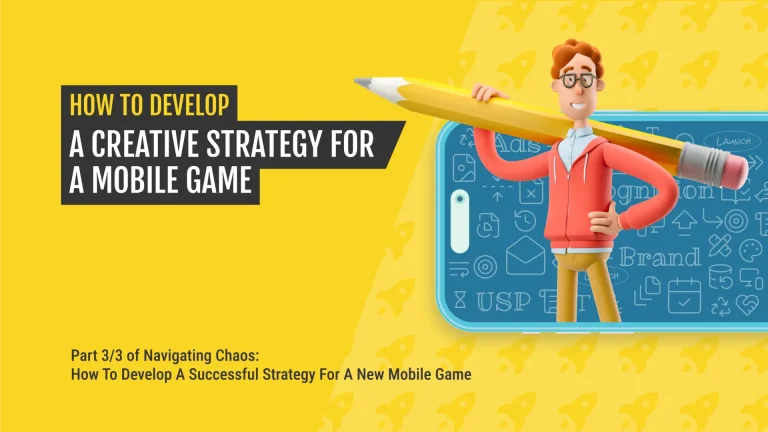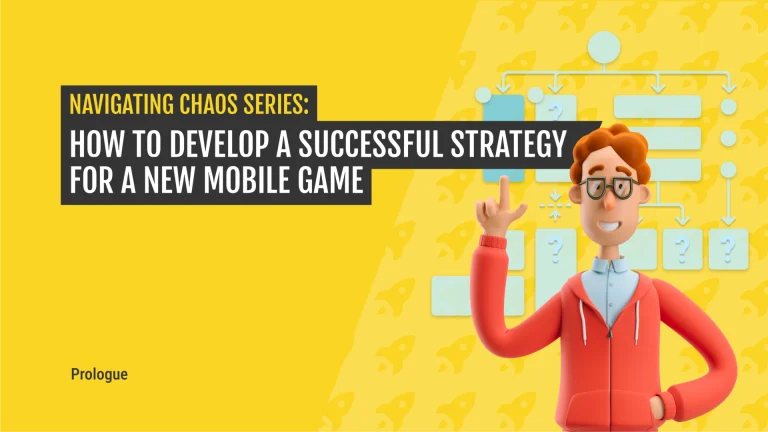To learn more about industry insights and best practices, sign up for the AppAgent newsletter here.
Learn what ad monetization means, which mobile ad formats you can use, why eCPM matters and the best ad networks for monetization in 2019.
This is a guest blog post by Jacopo Guanziroli who provides consultancy for AppAgent on ad monetization topics. Jacopo worked at Barcelona-based Social Point as Ad Monetization Manager. Alongside AppAgent he works with Flaregames and The Breach Studios.
The idea of ad monetization is that you can generate a sustainable revenue through your website, blog or app, by featuring advertisements. Ad monetization is becoming one of the single most important aspects of mobile marketing. If you don’t know how it works, then you need to – and fast!
According to eMarketer, spending on mobile ads will represent 43% of total media ad spending in the US by 2020 – a greater percentage than all traditional media combined. Naturally, the demand for inventory will grow as mobile publishers seek to capitalize on this big trend.

Ad monetization meaning
We asked Božo Janković from Nordeus, creators of hit game Top Eleven, to give his explanation of ad monetization and related terms: “Ad monetization has been established as a sustainable business model over the course of the past few years. The growth of in-app advertising has been so great that the industry has come up with a separate term for this business model: view-to-play. This term is used to mainly refer to games that make ads part of their core gameplay and that are making the majority of their revenues by showing ads.”
To help you understand the principles and process of ad monetization works, we’ve broken it down into 6 main areas. They are:
1) How mobile ad monetization works
2) The difference between brand and performance campaigns
3) The main types of mobile ads
4) The main bid types
5) What eCPM means on mobile
6) Top mobile ad networks for monetization in 2019
Let’s look at them in more detail.
How mobile ad monetization works
Freemium apps offer us access to content that’s free but give us the opportunity to download premium content, which needs to be paid for. Spotify and Skype are great examples of successful freemium models at work.
We call this form of mobile monetization an ‘In app purchase’ or IAP. It’s the classic method for monetizing your app.
It’s particularly popular for game developers. They make their game free to download and pick up users, but if the user then wants to unlock extra content like lives or resources then they need to pay. Sound familiar?
Another equally effective monetization method is In-App Advertisements (IAA). The name is pretty clear, but to avoid doubt, with IAA the users of your app are exposed to third-party adverts. Advertisers and developers are linked by ad networks, facilitating their supply and demand.
As an example, think of Duolingo. At the end of each stage you can find banners from advertisers who want their app to be downloaded. This is an example of a push-advertisement where the publishers decide when and where to display it. Later in the post, we will discuss pull-ads – where users decide when to be shown an advert.

The difference between brand and performance campaigns
Let us imagine that we own an app and want to raise some revenue by using ad monetization. We’ve been approached by two advertisers who want to publish advertisements in our app.
One is a brand-new technology retailer that wants to increase footfall in its shop and draw customers to its website. The other is a mobile app developer that wants to increase the number of downloads for its new app. The requirements of each advertiser are different, which means different campaign types.
In this case, we would recommend that the technology shop should choose a branding campaign and the developer select a performance campaign. But what’s the difference?
A branding campaign focuses on delivering users a positive message about your brand. It’s not about pushing a user to purchase immediately but rather to create awareness first, which should bring results in the medium to long-term timeframe. In our example, the technology shop wants potential customers to know they exist and, when they want to buy a new gadget or tech toy, will remember the shop and the brand.
Our app developers quite clearly want to drive action, encouraging users to install their app – which is why they need a performance campaign. Performance campaigns are designed to get people to tap on an ad and initiate an install.
As well as a different focus, the campaigns will have different pricing strategies too, something we explore when we look at bid types.
The main types of mobile ads
Using the same example, now that we know the objectives of the two campaigns, we need to select the right type of advertisement to create and display.
There are four main types of adverts to choose from: rewarded videos, interstitials, offer walls and native. The newest ad format used for monetization are also playable (interactive) ads. Let’s look at them in more detail.
Rewarded videos are a type of a “pull-ad” where the users decide to access premium content or to get an extra reward such as double coins in exchange for viewing an in-app video ad. Once the user has watched the video they are returned to the app flow where they will have earned their in-app currency or collect a bonus as a reward for viewing the content.
Interstitials are ads that are displayed within the app’s interstices. They belong to a whole category of push ads that includes banners (adverts displayed at key points like the end of a level in a game for example) and videos (including skippable videos that are pushed by the app to users at precise moments). These adverts are served (i.e. pushed) to users without their explicit will or agreement.
Offerwall adverts give users rewards for completing tasks or taking specific actions. Examples can include signing up to a newsletter, viewing a video, installing a game or an app, or reaching a certain level within a game.
Native advertising is marketing content that matches the form and function of the app – looking as if it’s part of the app itself. One of the commonest examples is a simple banner, a static picture or text in the form of a bar or a box. The advert is incorporated within the app, without affecting its function or navigation. In some cases, it can be hard to spot that it’s an advert at all – and that’s the appeal.
To develop a successful campaign, advertisers have to select the best advertising option(s) to reach their desired audience. In some cases they may choose a mixture of ad-types for the same campaign. Alongside choosing the most appropriate ad mix, they need to select the most effective pricing model to achieve their aims and objectives.

Jan Pollack, Senior Ad Monetization Manager at Wooga adds his two cents on what makes a successful campaign: “If you want to succeed in creating a well-performing ad-monetization strategy, you should think about the right type of ads as well as the best integration from a users’ point of view. But no matter which ad-format, the app/game designer should figure out – together with ad experts – how to include these ad types as deeply and natively into the product to achieve great results. And the sooner in the development, the better the end results.”
Ad monetization bidding: CPM or CPA?
After the creative work is done, now it’s time to pay for the adverts. There are mainly two mobile marketing advert bid types:
1/ CPM (cost per mile)
2/ CPA (cost per action)
By choosing a CPM campaign, you will pay for every thousand views (also termed impressions) of your advert. You pay for this whether the user clicks on your advert or not.
With CPA, you only pay when a user performs a certain action which could be an install or submitting a subscription form for example. We can use this to calculate the cost per install (CPI) – a common term you will hear a lot in the digital world.
A branding campaign that aims to raise awareness of your brand or business is likely to opt from a CPM bid-strategy. If we are running a performance campaign then the CPA – or CPI – is a better approach, generating real, measurable action as a return for your advertising spend.
What eCPM means on mobile
The effective cost per mille (eCPM) represents a standard unit of measurement that publishers can use to compare all the ads that they run on their apps – covering CPM or CPA. But how does it work?
Using our example once again, by using an eCPM unit the publisher can measure the performance of all adverts served through their apps. If we take the CPA paid by the videogame developer and divide it by a thousand we can translate the CPA into the cost of every single view (or impression).
Delving deeper, if a single installation of the videogame has a CPA of $5, then the cost for each impression of the technology shop ad should be 5/1000 – which is $0.005 dollars. (This isn’t an exact calculation but an average figure, which we have calculated to compare different campaigns run on an app to have a univocal unit). By doing this, the publisher can uniquely measure their ad revenue.
Top mobile ad networks for monetization in 2019
There are dozens, if not hundreds, of ad networks publishers can use for ad monetization. To help you navigate in this space both from the user acquisition and ad monetization, you should check the popular Appsflyer Performance Index. Here’s an overview of top networks used for ad monetization:
-
- Facebook & Instagram (Audience Network)
-
- Google AdMob
-
- AdColony
-
- Applovin
-
- Vungle
-
- UnityAds
-
- Ironsource
- Fyber
- Chartboost
- Tapjoy
Do you need to know more?
This blog is a quick and simple introduction to ad monetization for mobile apps. If you would like to discuss how AppAgent can help you reach more customers through mobile marketing, then contact us today. For ad monetization topic feel free to reach out through his website.
Speaking about costs… if you’d like to learn how to calculate customer acquisition cost for your mobile app, check
Keep up with appagent
📕 Learn more about industry insights and best practices by signing up for our newsletter.
🤝 Get help with growth strategy, app marketing, user acquisition and video ad production by contacting us at [email protected].
👉 Follow us on LinkedIn, Twitter, YouTube, TikTok, Facebook, and Instagram.
👥 Join our team as an Art Director, Mobile Growth Manager or Junior Creative Producer.
Related Articles
How to Develop a Creative Strategy for a New Mobile Game

What exactly is a creative strategy, how do you build one, and how do you achieve the "sex appeal" of your game?
How to Find a Game-Market Fit Early and Efficiently

Today, a robust go-to-market strategy is essential for success, it can no longer be an afterthought.
Navigating Chaos: How To Develop a Successful Strategy For a Mobile Gaming Studio

This series will provide insights on how to approach business strategy in the post-IDFA world, specifically within the gaming sector.
Where to Begin when Developing a New Mobile Game

Where should you start with the development of a new mobile game: do you begin with the idea or the audience?



















